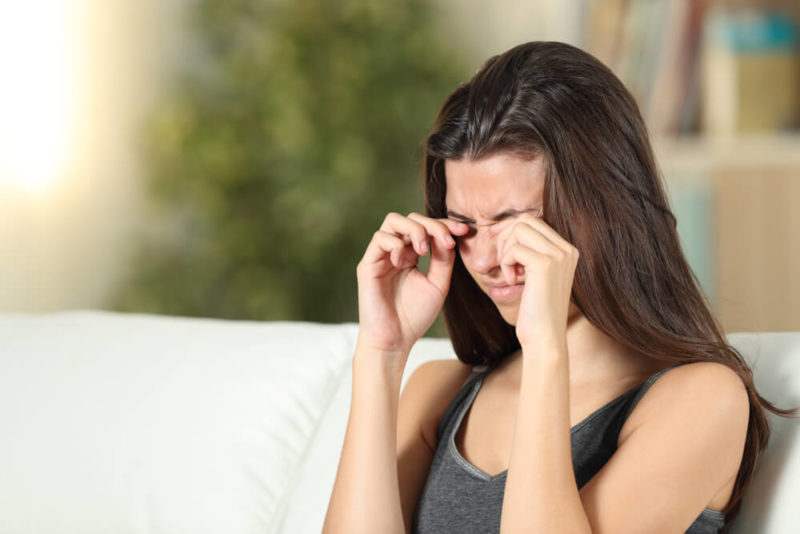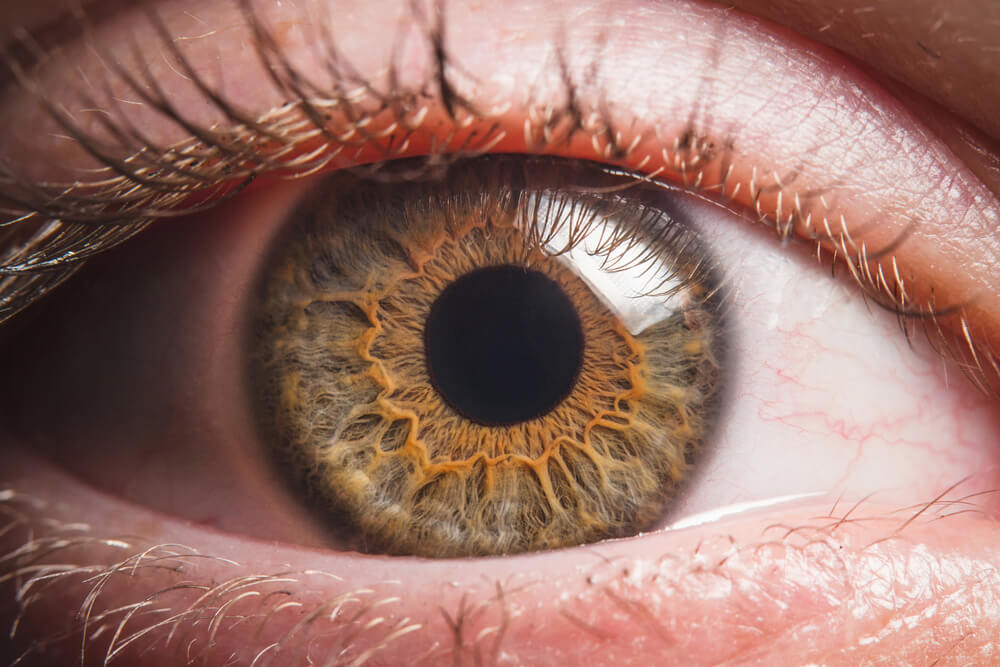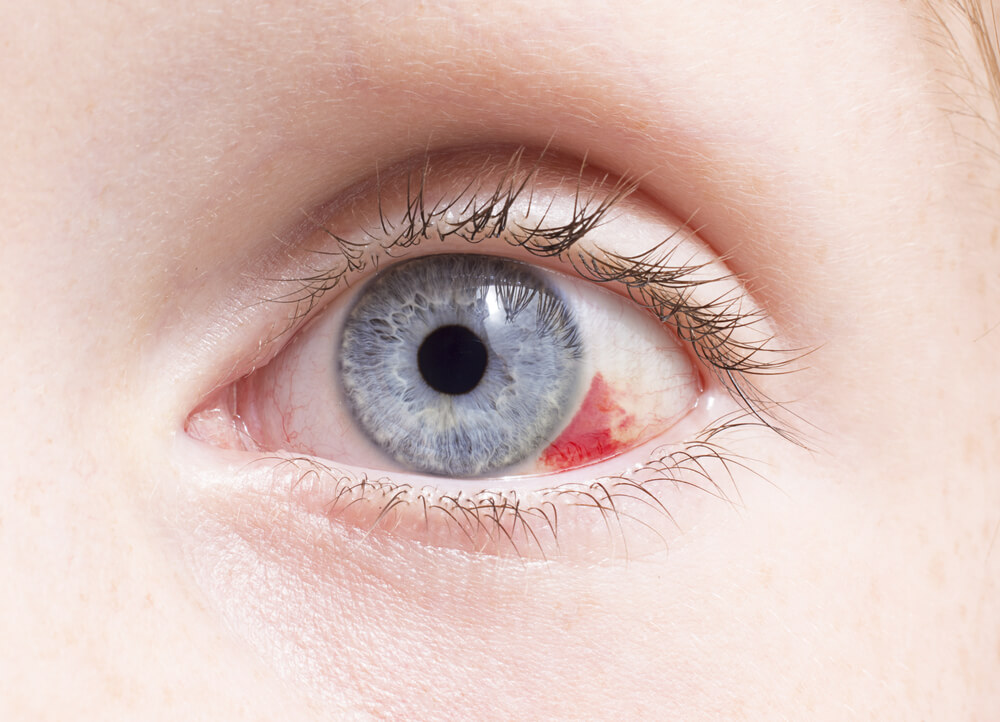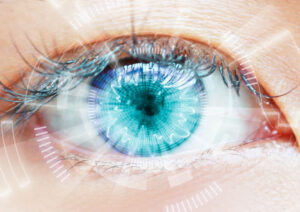
If you have a scratched eye, it is most likely in the area of the eye known as your cornea. The cornea works to let light into your eye so that you can get a good range of vision. It is the outward-facing area of the surface of your eye directly in front of the iris and pupil. The cornea is vital to your good vision and healthy eyes as it is a complex part of your eye including five different layers from front to back. The clear front surface of your eye, known as your cornea can become scratched with airborne debris, foreign objects, or trauma. It is very important to call Diamond Vision immediately if you notice symptoms of a scratched cornea.
Common Symptoms of a Corneal Abrasion
You may be wondering, “How can you tell if you scratched your cornea?” If you are an active person it could be fairly common to suffer from surface scratches on your eye, and not even notice. However, if you are suffering from these common symptoms of a corneal abrasion you may need immediate treatment:
- A feeling that something is in your eye
- Teary, watery eyes
- Red eyes
- Blurry vision
- Headaches
- Sensitivity to sunlight
- Loss of vision in your eye
NOTE: You may be able to reduce your risk of a scratched cornea by wearing protective eyewear in high-risk areas. Dry eyes increase your risk of corneal abrasion so you may also want to protect your eyes from corneal scratching with eye drops.
What is Your Eye Cornea?
A scratched eye is one of the most common optic injuries. While many people suffer from the scratched white part of the eye they may not realize what a scratched cornea is because they do not understand the layers of the eye. The clear area of your eye is known as the cornea, and it is the dome peak of the window of your eyes. Clear, and delicate, the cornea is prone to abrasions, scratches, and irritation.
Your cornea lets light enter your eye for vision, and also provides about 75 percent of your eye focus ability. Beyond that, your cornea has individual layers with a specific function in each area. Any of these areas can be damaged by a corneal abrasion, or scratch on the eye.
The five layers of your eye cornea include:
- 1. The Corneal Epithelium
The outer layer of your cornea is very thin, and may only include 10 cells, or less. Measuring an estimated 50 microns, this area makes up only about 10 percent of the cornea. The ultra-thin epithelial cells of the eyes are constantly reproducing so, the turnover time for your corneal epithelium is only about one week.
- Bowman’s Layer
Also a thin layer of your eye, this layer is very thin measuring about 8 to 14 microns. This layer of your eyes is made of connective tissues that create a bond between the corneal epithelium, and stroma (the underlying layer).
- Corneal Stroma
The middle layer of your cornea is made up of collagen fibers that arrange a surface about 500 microns thick. Making up approximately 90 percent of the cornea in thickness, it is arranged parallel to the surface of your cornea in 200 to 300 bundles of tissue known as lamellae. The arrangement of lamellae is how you are able to see clearly through your cornea.
- Descemet’s Membrane
The ultra-fine layer is pronounced “dees-eh-mays.” Over time, this layer thickens from about 5 microns as a child, to about 15 microns in thickness for adults. This layer is what separates the stroma of your eye from the underlying layer.
- Corneal Endothelium
The innermost layer of your cornea is in the back of the endothelium. This single layer of cells measures only about 5 microns thick. With a hexagonal (six-sided) shape of the cells, the regular arrangement is oftentimes called an endothelial mosaic.
Am I At Risk From a Scratched Cornea?
One of the most common eye injuries, a scratched cornea can cause you discomfort, and other symptoms. If left untreated, corneal abrasion can even lead to an eye infection which could cause a loss of vision. Eye cornea damage is very common for people of all ages. Some people are more at risk for corneal abrasions. These groups of people include:
- Children, and toddlers
- Anyone with untrimmed fingernails
- Young people who are not cautious around sharp objects
- Athletes
- People with dangerous, or extreme hobbies
- Workers who are exposed to hazards
- Anyone who wears contacts

At-Home Remedies for Scratched Cornea
Avoid the urge to rub, or pull at your eyes if you get the feeling that you have something in it. If your eyes are irritated, and you look inside of your eye and realize there is nothing in it, you may have a corneal abrasion. If you are not able to stop the irritation in your eyes you may need a range of corneal abrasion treatment. First, try to rinse the irritated area with a rinse. If needed, repeat the rinse in both eyes until you can feel if there is a difference in the level of pain, and irritation you feel.
How Can You Tell if You Scratched Your Cornea?
There are certain ways that you can find out how you tell if you scratched your cornea. The best way is to perform a personal inventory of common symptoms of a scratched cornea. Then, to prevent any risk of further irritation, you need to schedule an eye exam. Until you are able to see an eye doctor, you can use these tips to reduce your risk of infection until you can find out for sure if you have scratched your cornea.
What Are The Best Eye Drops For Scratched Cornea
You will need to rinse your eye out as soon as you notice the symptoms of a scratched cornea. However, you may be in a place where you do not have access to the best eye drops for cornea damage. For this reason, it is recommended that you always keep a small bottle of eye drops with you at home, in the workplace, and in your car.
The best eye drops for scratched cornea include water, natural tears, artificial tears, allergy drops, anti-redness drops, contact lens solution, and other recommended rinses from your eye doctor. Talk to your eye specialist, and find out how you can also use eye drops for scratched cornea as how to sleep with a scratched eye.
Remember: Lubricating your eyes is the top way to reduce your risk of corneal abrasion, and using eye drops may also relieve symptoms of a scratched cornea so it is recommended that you purchase the best eye drops, and carry them with you at all times.
Call the offices of Diamond Vision today to schedule an eye exam for your scratched cornea. If you are suffering from any of the most common symptoms of a corneal abrasion you may need corneal abrasion treatment. Talking to an eye specialist is the best way to determine what types of eye therapy you need, so do not wait to make that call if you are suffering from a scratched eye.
Contact our HQ – Manhattan Eye Care Clinic for any pieces of information.
Contact Us
If you have more questions about LASIK procedures, get in touch with us.
Related Blogs

Who Should Not Have Laser Eye Surgery
Laser eye surgery, commonly known as LASIK (Laser-Assisted In Situ Keratomileusis), has revolutionized the world of vision correction. It’s a procedure that has enabled millions

LASIK eye surgery: What is LASIK and how does it work?
What Is LASIK? Experts categorize LASIK as a refractive eye surgery in which lasers are used to correct vision problems. LASIK corrects several refractive errors,

Everything You Need To Know About The Lipiflow Treatment
LipiFlow is often referred to as a ground-breaking technology that is able to treat dry eye issues caused by meibomian gland dysfunction, or MGD. Experts
